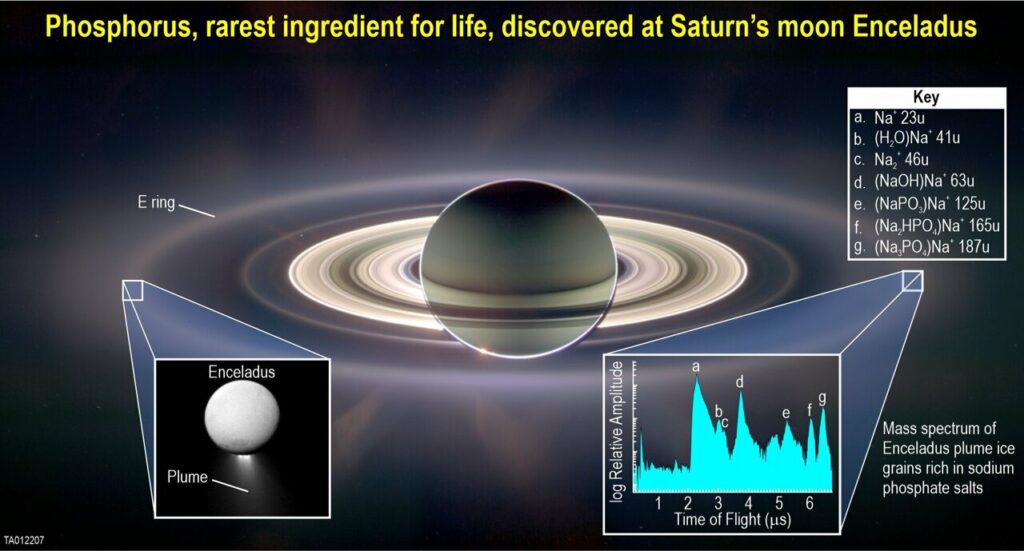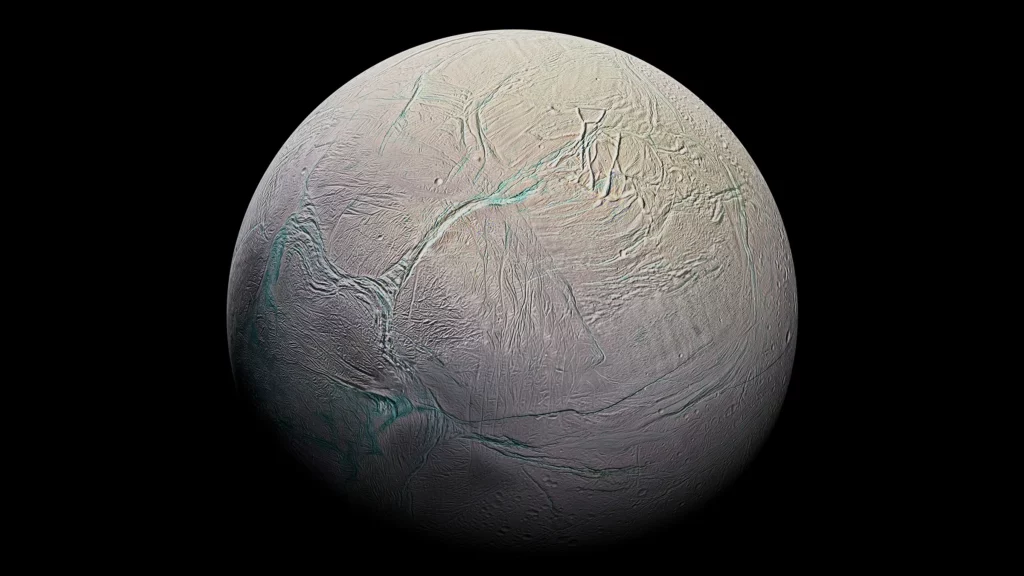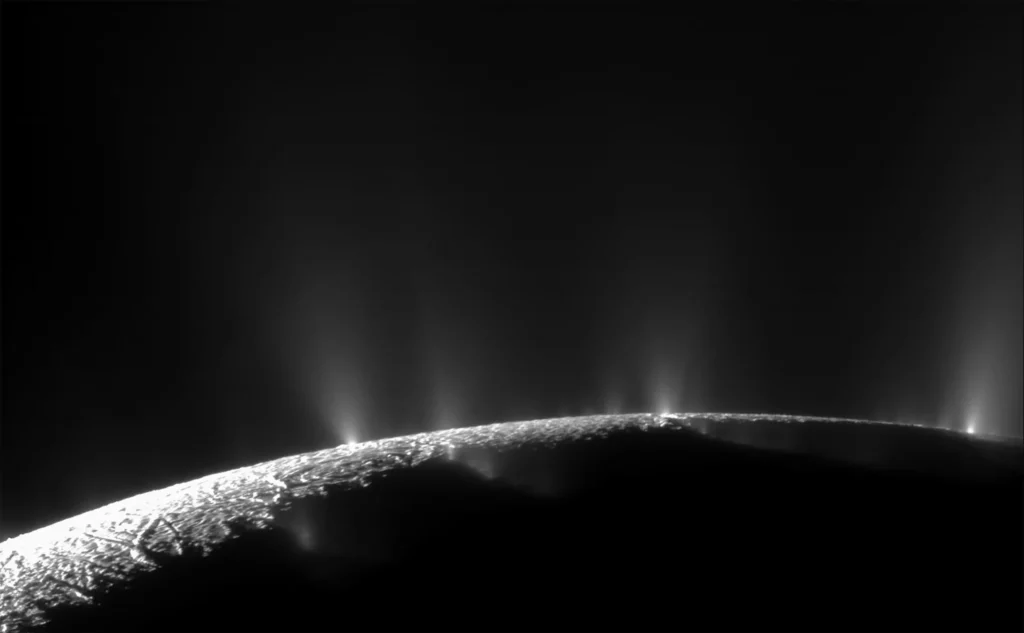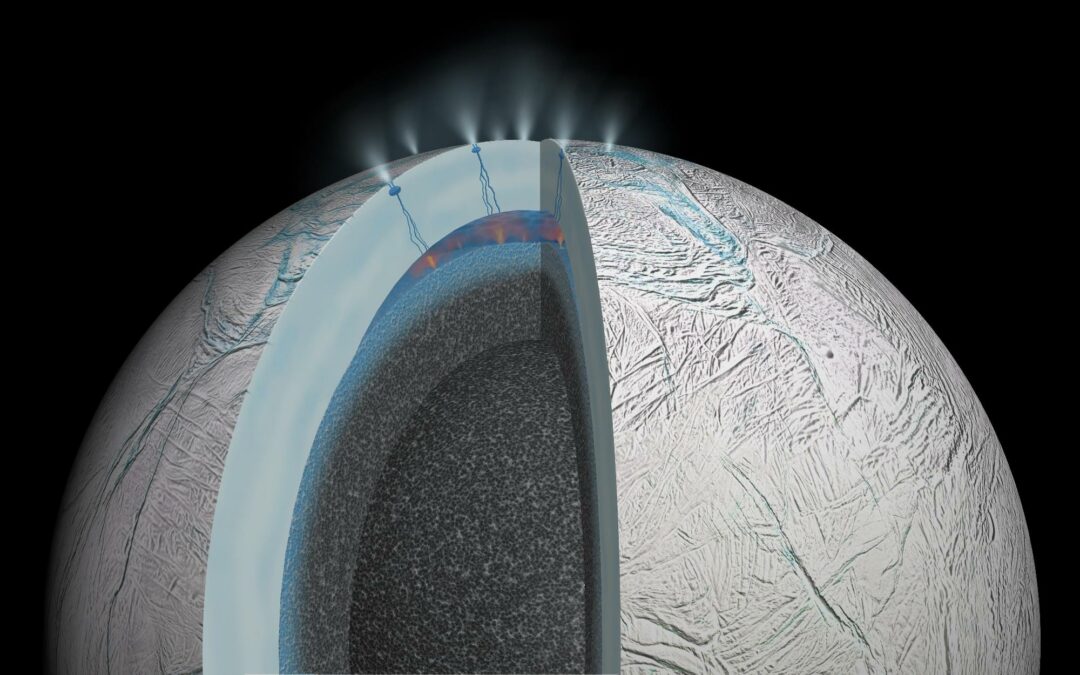A recent study has indicated that Saturn’s moon could support life, due to key components found to be existing within its ‘ice-covered aqueous ocean’.
A paper titled Detection of phosphates emanating from Enceladus’ Ocean was published in the scientific journal Nature on Wednesday (June 14).
The study focused on Enceladus, a moon of Saturn that is around 300 miles across and formed of ice, and is frequently cited as our best chance of discovering extraterrestrial life in our solar system.
A research team led by Frank Postberg, Head of Planetary Sciences and Remote Sensing Professorship Planetary Sciences at Freie Universitat Berlin, stated in the paper that they discovered large levels of phosphorus salts on the moon.
RELATED: A Daring Plan To Dim The Sun By Blasting Moon Dust Into Space Could Aid In Cooling The Planet
Scientists discovered that sodium phosphate concentrations are ‘100-fold higher’ in Enceladus’ ‘plume-forming ocean waters’ than in ‘Earth’s oceans’.

The latest phosphate discovery proves that Saturn’s sixth-largest moon contains all six basic ingredients of life, potentially making it habitable.
Carbon, hydrogen, nitrogen, oxygen, sulfur, and phosphorus are the elements in concern.
Professor Postberg told Motherboard that habitats with the six main ingredients can support life even when they are far from the sun.
“Enceladus was already considered a pretty habitable place before this,” he remarked.
“The conditions in the ocean appear to be favorable for life.” There are quite likely hydrothermal vent systems at the ocean’s bottom that would provide energy, so you do not need sunlight.”
RELATED: These Are The Astronauts Who Will Fly Around The Moon On NASA’s Artemis 2 Expedition

He went on to claim that there are a range of ‘organic substances’ on Enceladus that a prior investigation had discovered.
According to the study, Enceladus has met “what is generally considered to be the strictest requirement of habitability.”
According to the findings, the moon’s ocean “could be a harbinger of high phosphorus availability in subsurface oceans across most of the outer Solar System.”
Following the publication of his team’s results, Professor Postberg stated that we could examine Enceladus using present technologies.
“This was basically the last piece that was needed to finally, without a doubt, deem Enceladus’ ocean habitable,” he added.
RELATED: According To Researchers, Glass Beads On The Moon Contain Water

“Of course, livable does not imply occupied. This phosphorous does not come from any living creature.
“It is not created by life.” It is only one of the ingredients that, at least on Earth, was necessary for the origin of life.”
He went on to say, “With today’s technology, we could build a spacecraft and send it to Enceladus to answer the question, is this habitable place actually inhabited or not?”
“With the next mission, we should get an answer to that question.”
Download The Radiant App To Start Watching!
Web: Watch Now
LGTV™: Download
ROKU™: Download
XBox™: Download
Samsung TV™: Download
Amazon Fire TV™: Download
Android TV™: Download

